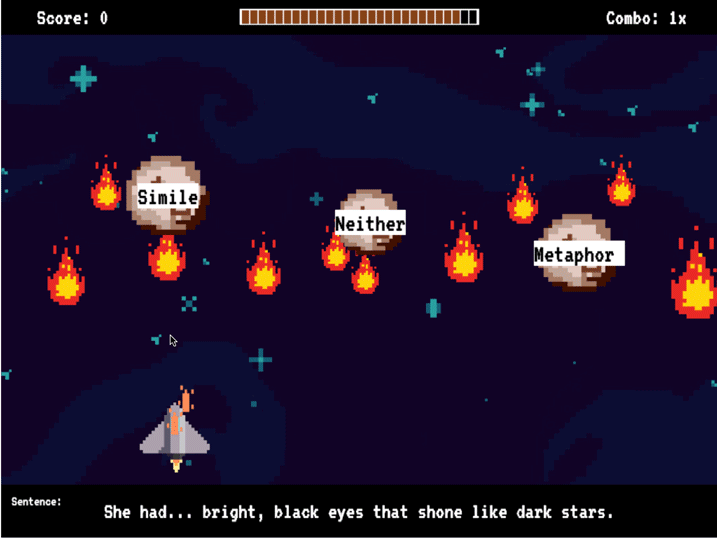Think back to your time in high school: Can you remember the most engaging, thought-provoking, or exciting lesson you were ever in?
It might not be that difficult to do. A memory that comes to mind for me was not even from a lesson I was in. Our school’s History 12 teacher created a World War I simulation for a group of his students, and I remember walking to class and watching these students diving under picnic tables, sneaking up with their backs close to walls, and carefully picking their way through the woods. What they were doing looked so enthralling, there were other students at the windows watching what they were doing. It looked like a lot of fun. I was actually pretty disappointed when my own History 12 class with the same teacher did not do the same simulation.
Think back again: Can you remember the most boring lesson you ever participated in?
That might be a little more difficult to do. Whatever lesson it was, chances are you don’t have very vivid memories of what you were learning or how you were learning it. I can remember what it felt like to be bored in school, and I remember the teachers that I found more boring, but I have a hard time remembering what the most boring lesson that I ever participated in was.
Boredom is boring. Our brains don’t register the information we learn as important while we are bored, so we end up not retaining very much over the long term.
Boring topics in school, though, are unavoidable. How can we, as teachers and curriculum providers, ensure that our students are engaged, even if the content we are trying to deliver is not a Marvel-superhero-movie level of fun?
Here are five ways to make your boring stuff your best stuff.
Tip #1: Make it funny
I started my education career teaching sixth grade. One thing I wanted my students to know in their science class was that they had to write very precise instructions for the procedure section of their lab reports.
This is not a thrilling topic.
So, I took a page out of a colleague’s book and had a little fun. The students had to create plant pots with bean seeds in them. To practice writing their procedures, I had them direct me in how to plant a bean seed. They would say, “Fill the pot” and I would stuff it with paper. They would say, “Put the dirt in the pot!” and I would keep filling it until it overflowed onto the table and floor. “No! Put a little bit of dirt in the pot!” I would dump out the pot and refill it with a tiny kernel of soil. By the time we were one minute into this exercise, the students were howling with laughter.
Boring concept, memorable lesson.

The same idea can be extended to online courses. At StudyForge, we are fortunate to have a team of skilled animators, artists, and instructional designers. These folks work together with our course writers to make learning come alive through entertaining videos, beautiful layouts, and fun games. Here is an example of a video from our English 6 course on subject-verb agreement, a topic which is not going to get many hearts racing.
With just a little bit of self-deprecating humor, the reason why subject-verb agreement is important is suddenly crystal clear.
Tip #2: Make it a game
When I was young, I was ultra competitive. If there was a game, I wanted to win, and if I did not win, tears were a frequent result. Now that I’m a little older, I realize that losing a game is not the end of the world, but I am still very motivated anytime a workshop presenter or professional development instructor says, “We’re going to play a little game.”
For me, the word ”game” results in instant engagement.
Knowing that a lot of people are wired this way, StudyForge has worked to incorporate games into our lessons, hoping that the result will be higher levels of interest for our students. For example, teachers know that teaching the difference between similes and metaphors is not going to win them a teacher-of-the-year award, but it’s something that needs to be covered anyway. How do we make a game of it?
Our StudyForge team has created a simple multiple-choice game, Space Blaster, to help students work on tasks like this. Students who are competitive like me will naturally try to get better and better scores, or even send messages to their friends to see who can get the highest point total.

All of a sudden, something boring has become a blast.
Tip #3: Keep it moving
I remember one morning teaching sixth-grade math that led to me laughing harder than I think I ever have in front of a group of students. I don’t remember what I was teaching, but I remember it was boring and I was trying to spice it up. I started doing a bit of a dance as I was drawing on the white board, and as the lesson progressed, the dance got more and more animated. At one point, I started doing something that vaguely resembled the twist. Just as my butt was really starting to stick out and wiggle back and forth, my principal walked in behind me. I didn’t see her, but my students did, and the room just about exploded. I looked around and saw her staring at me, wide-eyed and incredulous, and I had to lean against the wall to keep myself from falling over while we both laughed.
What I was trying to do there was put a little motion into my teaching. If things are moving, students will pay way more attention.
We try to incorporate this principle into our StudyForge lessons. In our videos, we make sure there is always something moving every few seconds, knowing that motion draws the eye of the audience.
Keep it from being boring by keeping it moving.
Tip #4: Get them outside

Field trips are some of the most important experiences in education. I still remember looking for leaves in the woods to make leaf rubbings in Kindergarten; I remember carrying the pumpkin with the longest stem I could find in first grade. I remember the nature ramble we did with my eighth-grade science teacher. “Let’s ramble!” he said before leading us off into the woods.
The point is, if you have the opportunity to get your students out of the classroom or off their screen, do it. I have written about this more fully in another blog article, Get Off Your Screen! Designing Activities that Get Your Students Outside, but the main idea is that experiences where students are outside, engaging with other people, or practically accomplishing something in the world are always going to be more interesting and meaningful. If you’re able to do this with some of your more boring topics, even better, because you’ve just made your boring stuff your best stuff.
Tip #5: If all else fails, get ‘er done
If all of your humor, gamesmanship, animatedness, and outdoorsiness is not enough to elevate the topic you have to teach, just get ‘er done. As great of a teacher as you are, there will always be learning standards that are less than thrilling that you have to guide your students through. If that’s the case, don’t belabor it. Teach it, quiz it, and move on. Not everything deserves a three-week inquiry project.
A surprising side effect
Elevating the boring parts of our courses can sometimes end up being a little more work, but it’s always worth it. And, it likely will have the surprising side effect on your job satisfaction. Thinking back on all of these examples from my own journey as a teacher, it’s interesting to note how much more engaging it was to teach those lessons.
After all, if you can make subject-verb agreement interesting, imagine what you could do with the good stuff.
About the Author






